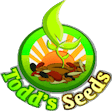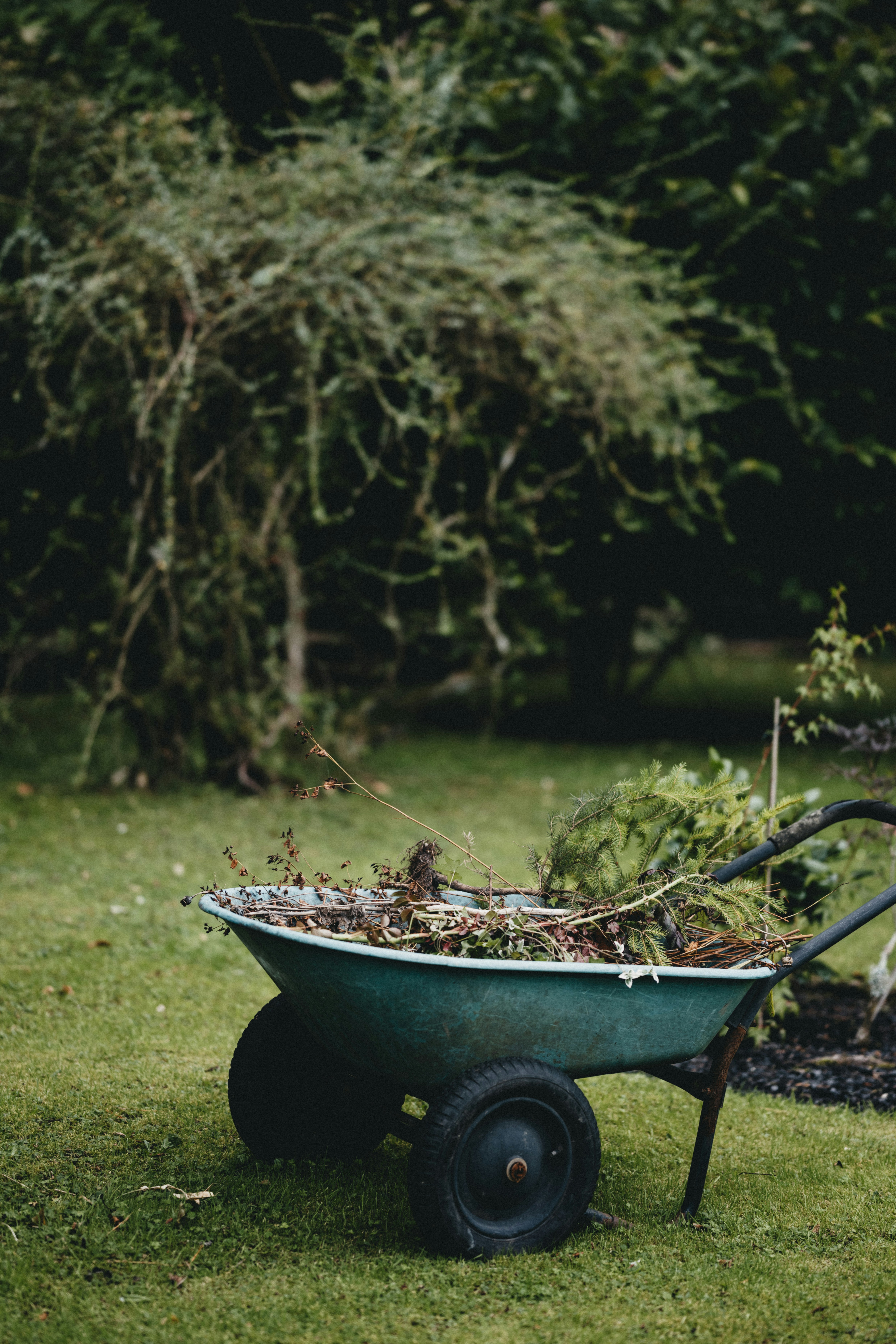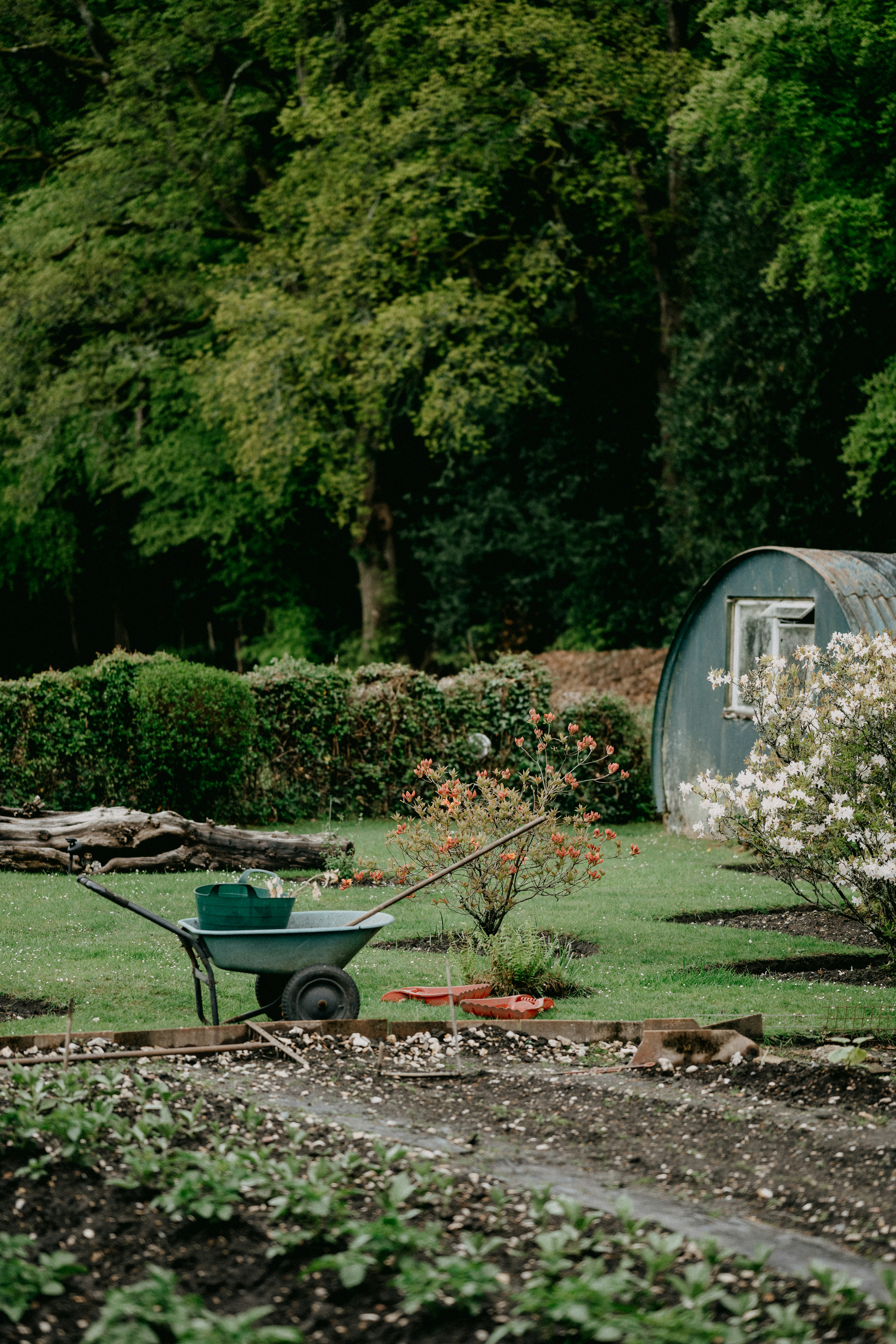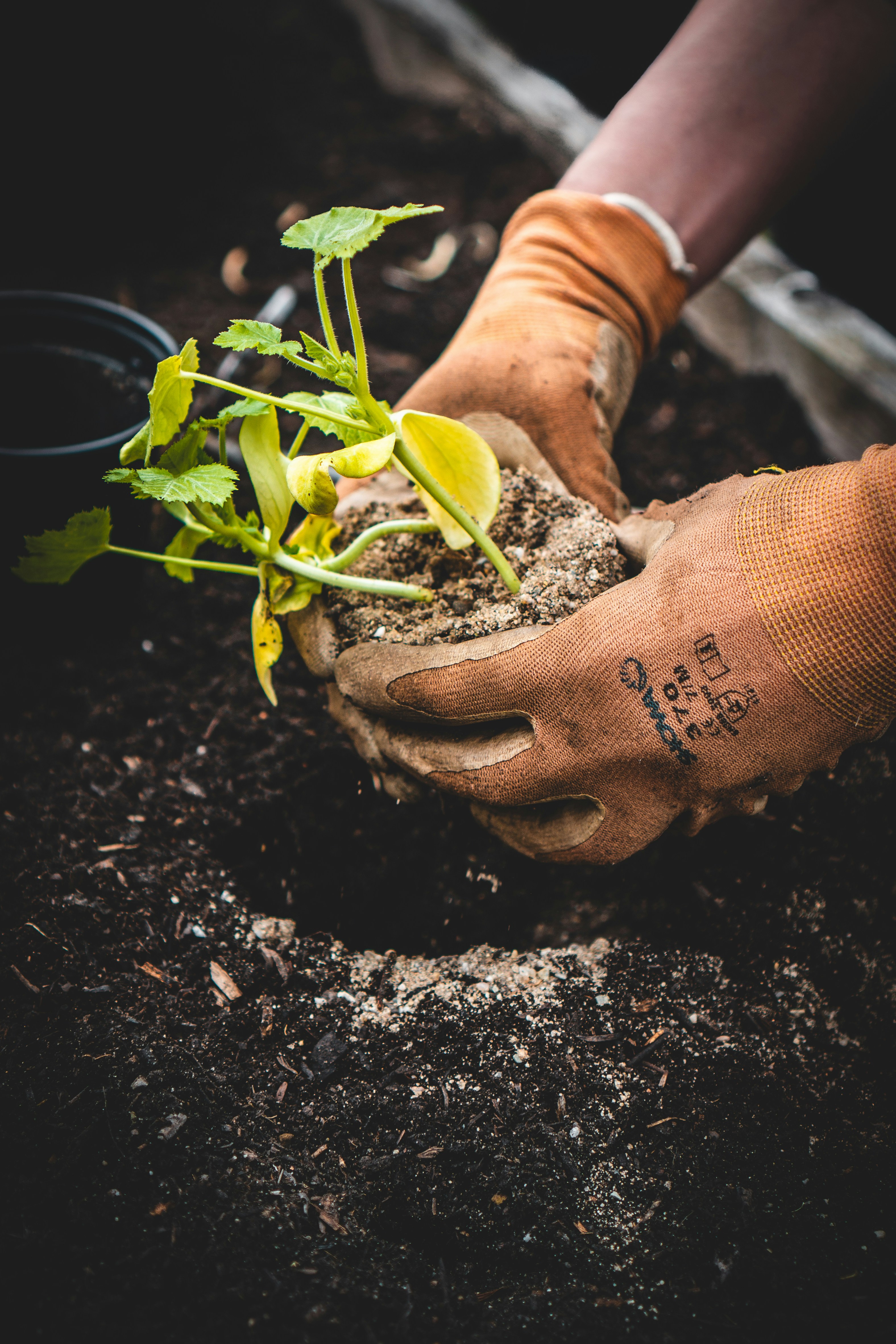Whether you’re new to gardening or a seasoned green thumb, determining the perfect time to harvest your vegetables can be a challenge. After months of dedicated care and nurturing, you want to ensure that you pick them at their peak, when they are bursting with flavor and nutrients. Luckily, there are a few telltale signs to look out for that will help you confidently harvest your vegetables at just the right moment. From checking the color and firmness of the produce to observing any visible ripening indicators, this article will guide you through the process of knowing exactly when to reap the rewards of your backyard abundance.
Factors Affecting Harvest Time
When it comes to harvesting vegetables, there are several factors that can affect the optimal time to pick your produce. Understanding these factors will help you determine when your vegetables are ready to be harvested and ensure that you enjoy the best possible flavor and quality from your homegrown crops.
Plant Type
Different plants have different growth patterns and requirements, which means that the ideal harvest time can vary greatly depending on the type of vegetable you are growing. Some plants, such as lettuce and spinach, are considered “cool-season” vegetables and thrive in cooler temperatures. Others, like tomatoes and peppers, are “warm-season” vegetables and require warmer weather to flourish. Understanding the specific needs of your plants will help you determine the best time to harvest.
Variety
Within each plant type, there are also different varieties, and each variety can have its own unique harvest time. Some tomato varieties, for example, may ripen in as little as 60 days, while others may take up to 90 days or more. When choosing which varieties to grow, consider factors such as your climate, gardening goals, and personal preference for flavor and texture.
Climate
The climate in which you are gardening plays a significant role in determining harvest time. Different vegetables have different temperature preferences, and extremes in heat or cold can affect the development and ripening of your crops. Additionally, the length of your growing season will influence when you should expect to harvest. It’s important to understand the specific climatic conditions required for each vegetable you are growing to ensure a successful harvest.
Soil Conditions
The health and fertility of your soil can impact the growth and development of your vegetables, and in turn, the timing of your harvest. Well-drained soil that is rich in organic matter and nutrients will provide your plants with the necessary resources to thrive and reach maturity. Regular soil testing and appropriate amendments can help ensure that your plants have the ideal conditions for optimal growth.
Maturity
Each vegetable has its own unique growth and maturity cycle. It’s important to know the expected time to maturity for each crop you are growing, as well as how to recognize the signs of maturity. Harvesting too early can result in underdeveloped or flavorless produce, while waiting too long can lead to overripe or tough vegetables. Regular observation and monitoring of your plants will help you determine the ideal harvest time.
Desired Use
The intended use of your vegetables can also influence when you decide to harvest. Some vegetables, such as lettuce and spinach, are often harvested when they are young and tender to be used in salads or sandwiches. On the other hand, vegetables like tomatoes and peppers are typically left to fully ripen on the vine for maximum flavor before being harvested. Consider how you plan to use your vegetables and harvest accordingly to achieve the desired taste and texture.
Signs of Readiness
When it comes to determining the readiness of your vegetables for harvest, there are several key signs to look for. These signs can vary depending on the specific vegetable you are growing, but generally include appearance, color, size, texture, and smell.
Appearance
One of the first indicators that your vegetables are ready to be harvested is their overall appearance. Mature vegetables will have a healthy and vibrant appearance, with leaves that are green and sturdy. Plants that are ready for harvest should be well-established and show no signs of disease or pest damage.
Color
Color is another important factor to consider when determining harvest time. Many vegetables will change color as they ripen, transitioning from green to their mature color. For example, tomatoes will turn from green to red, while bell peppers may turn from green to red, yellow, or orange. Learning the expected color change for each vegetable you are growing will help you gauge when they are ready to be picked.
Size
The size of your vegetables can also indicate when they are ready for harvest. Most vegetables will grow to a certain size at maturity, and monitoring their growth can give you a good idea of when they are approaching or at their ideal size. For example, carrots are typically ready to be harvested when they reach a diameter of about ¾ to 1 inch, while zucchini is best picked when it is 6 to 8 inches long.
Texture
The texture of your vegetables can provide clues about their readiness for harvest. Vegetables that are ready to be picked will have a firm and crisp texture, indicating that they are at their peak of freshness and flavor. On the other hand, vegetables that have a soft or mushy texture may be overripe or past their prime.
Smell
Some vegetables, particularly herbs, may develop a strong aroma as they mature. Paying attention to the smell of your herbs can help you determine when they are at their most fragrant and flavorful. For example, basil is best harvested right before it begins to flower, when its leaves are aromatic and rich in essential oils.
Harvesting Techniques
Once you have determined that your vegetables are ready to be harvested, it’s important to use the proper techniques to ensure a successful and efficient harvest.
Hand Harvesting
Many vegetables, especially those with delicate stems or foliage, are best harvested by hand. This involves gently picking or cutting the vegetable from the plant, taking care not to damage the surrounding foliage or the plant itself. Hand harvesting is commonly used for vegetables like tomatoes, cucumbers, and peppers.
Cutting
Some vegetables, such as lettuce or spinach, can be harvested by cutting off the outer leaves or by cutting the entire plant just above the soil level. This allows for ongoing harvest throughout the growing season, as new leaves will continue to grow from the center of the plant. Use a sharp knife or scissors to make clean cuts and avoid damaging the plant.
Pulling
Root vegetables, such as carrots or radishes, are typically harvested by pulling them directly out of the ground. To harvest, grasp the foliage near the base of the plant and gently pull upwards, taking care not to break or damage the roots. If the soil is compacted or difficult to remove, you can use a garden fork or trowel to loosen the soil around the vegetables before pulling them out.
Twisting
Certain vegetables, like zucchini or summer squash, can be harvested by gently twisting them off the plant. Hold the vegetable near its base and give it a gentle twist, allowing it to detach from the stem. This method is quick and easy, but be careful not to apply too much force, as it can damage the plant or cause the vegetable to break off prematurely.
Digging
Root vegetables that grow deep in the soil, such as potatoes or beets, require digging to harvest. Use a garden fork or spade to carefully loosen the soil around the plants, taking care not to damage the tubers or roots. Once the soil is loose, gently lift the vegetables out of the ground, shaking off any excess soil as you go.
Popular Vegetables and Their Harvest Guidelines
Different vegetables have different requirements and harvest guidelines. Here are some popular vegetables and general guidelines for when they are ready to be harvested:
Tomatoes
Tomatoes are typically ready to be harvested when they have reached their mature color and are firm to the touch. Avoid picking tomatoes when they are still green or when they are overly soft. Depending on the variety, tomatoes can take anywhere from 60 to 90 days to reach maturity.
Carrots
Carrots are best harvested when they reach a diameter of about ¾ to 1 inch. They should have a vibrant orange color and a crisp texture. Harvest carrots by gently pulling them out of the ground, being careful not to break or damage the roots.
Cucumbers
Cucumbers are typically ready to be harvested when they are 6 to 8 inches long and have a dark green color. They should have a firm texture and smooth skin. Harvest cucumbers by gently twisting them off the vine or by using a sharp knife or pruning shears to cut them.
Lettuce
Lettuce leaves can be harvested when they are young and tender, typically about 3 to 4 inches in height. Harvest by cutting off the outer leaves or by cutting the entire plant just above the soil level. This allows for ongoing harvest throughout the growing season.
Peppers
Peppers can be harvested when they have reached their mature color, whether it be green, red, yellow, or orange. The peppers should be firm to the touch and have a glossy appearance. Harvest by cutting the stem just above the pepper or by gently twisting it off the plant.
Radishes
Radishes are best harvested when they reach about 1 inch in diameter. They should have a bright red or pink color and a firm texture. Harvest radishes by gently pulling them out of the ground, being careful not to break or damage the roots.
Spinach
Spinach leaves can be harvested when they are about 4 to 6 inches tall. Younger leaves will be more tender and flavorful. Harvest by cutting off the outer leaves or by cutting the entire plant just above the soil level.
Zucchini
Zucchini is typically ready to be harvested when it is 6 to 8 inches long and has a glossy skin. Harvest by gently twisting the zucchini off the plant or by using a sharp knife or pruning shears to cut it.
Broccoli
Broccoli is best harvested when the central head is firm and compact, typically about 6 to 8 inches in diameter. Harvest by cutting the stem just below the head, taking care not to damage the surrounding foliage. This will encourage side shoots to develop for additional harvest.
Green Beans
Green beans are usually ready to be harvested when the pods are long and slender, but before the seeds inside become visibly bulging. The beans should snap easily when bent. Harvest by gently pulling the beans off the vines or by using clean scissors or pruning shears to cut them.
Post-Harvest Care
Once you have harvested your vegetables, it’s important to take proper care of them to ensure their quality and longevity.
Cleaning
Start by gently cleaning your vegetables to remove any dirt or debris. Rinse them under cool water, using a soft brush or cloth if necessary. Be careful not to scrub too vigorously, as this can damage the skin or remove natural protective coatings.
Sorting
After cleaning, sort your vegetables to remove any damaged, bruised, or overripe ones. This will help prevent the spread of rot or decay to the rest of your harvest. Set aside any vegetables that are not suitable for immediate consumption and consider using them for cooking or preserving.
Storage
The way you store your vegetables can greatly affect their shelf life. Some vegetables, like tomatoes or peppers, are best stored at room temperature out of direct sunlight. Others, like lettuce or spinach, are more perishable and should be stored in the refrigerator. Be sure to store each vegetable type separately to prevent cross-contamination and to maintain optimal freshness.
Preparation
When you are ready to use your harvested vegetables, it’s important to handle and prepare them properly. Wash them again under cool water, even if you previously cleaned them after harvest. Remove any inedible parts, such as stems, cores, or tough outer leaves. Cook your vegetables according to your preferred method or enjoy them fresh in salads, sandwiches, or other dishes.
Harvesting Leafy Greens
Leafy greens are a staple in many gardens and kitchens. Here are some key guidelines for harvesting popular leafy greens:
Lettuce
Lettuce leaves can be harvested when they are young and tender, typically about 3 to 4 inches in height. Harvest by cutting off the outer leaves or by cutting the entire plant just above the soil level. This allows for ongoing harvest throughout the growing season.
Spinach
Spinach leaves can be harvested when they are about 4 to 6 inches tall. Younger leaves will be more tender and flavorful. Harvest by cutting off the outer leaves or by cutting the entire plant just above the soil level.
Kale
Kale leaves can be harvested when they reach a desired size, typically about 8 to 10 inches in height. Harvest by cutting off the outer leaves or by cutting the entire plant just above the soil level. Kale leaves become sweeter after being exposed to frost, so consider harvesting them in the cooler months for the best flavor.
Swiss Chard
Swiss chard leaves can be harvested when they reach a desired size, typically about 8 to 10 inches in height. Harvest by cutting off the outer leaves or by cutting the entire plant just above the soil level. Chard leaves can be used interchangeably with spinach in many recipes and offer a slightly earthy flavor.
Arugula
Arugula leaves can be harvested when they are young and tender, typically about 3 to 4 inches in height. Harvest by cutting off the outer leaves or by cutting the entire plant just above the soil level. Arugula has a distinct peppery flavor and is often used in salads or as a garnish for other dishes.
Harvesting Root Vegetables
Root vegetables are a versatile and nutritious addition to any garden. Here’s how to harvest some popular root vegetables:
Carrots
Carrots are best harvested when they reach a diameter of about ¾ to 1 inch. They should have a vibrant orange color and a crisp texture. Harvest carrots by gently pulling them out of the ground, being careful not to break or damage the roots. Remove any excess soil before storing or using.
Radishes
Radishes are best harvested when they reach about 1 inch in diameter. They should have a bright red or pink color and a firm texture. Harvest radishes by gently pulling them out of the ground, being careful not to break or damage the roots. Remove any excess soil before storing or using.
Turnips
Turnips are typically ready to be harvested when they reach about 2 to 3 inches in diameter. They should have a smooth skin and a firm texture. Harvest turnips by gently pulling them out of the ground, being careful not to break or damage the roots. Remove any excess soil before storing or using.
Beets
Beets are best harvested when they reach a desired size, typically about 2 to 3 inches in diameter. They should have a deep, rich color and a firm texture. Harvest beets by gently pulling them out of the ground, being careful not to break or damage the roots. Remove any excess soil before storing or using.
Potatoes
Potatoes are typically ready to be harvested when the foliage above ground begins to yellow and die back. Use a garden fork or spade to carefully dig around the plants and lift the potatoes out of the ground. Allow them to dry and cure in a cool, dark place for a few days before storing.
Harvesting Fruiting Vegetables
Fruiting vegetables are a popular choice for many gardeners. Here’s how to harvest some common fruiting vegetables:
Tomatoes
Tomatoes are typically ready to be harvested when they have reached their mature color and are firm to the touch. Avoid picking tomatoes when they are still green or when they are overly soft. Depending on the variety, tomatoes can take anywhere from 60 to 90 days to reach maturity. Twist or cut the stem just above the tomato to detach it from the plant.
Cucumbers
Cucumbers are typically ready to be harvested when they are 6 to 8 inches long and have a dark green color. They should have a firm texture and smooth skin. Harvest cucumbers by gently twisting them off the vine or by using a sharp knife or pruning shears to cut them.
Peppers
Peppers can be harvested when they have reached their mature color, whether it be green, red, yellow, or orange. The peppers should be firm to the touch and have a glossy appearance. Harvest by cutting the stem just above the pepper or by gently twisting it off the plant.
Eggplants
Eggplants are typically ready to be harvested when they have reached their mature size, which can vary depending on the variety. They should have a firm texture and a glossy skin. Harvest by cutting the stem just above the eggplant or by gently twisting it off the plant.
Zucchini
Zucchini is typically ready to be harvested when it is 6 to 8 inches long and has a glossy skin. Harvest by gently twisting the zucchini off the plant or by using a sharp knife or pruning shears to cut it. Regular harvesting will encourage the plant to produce more fruit.

Harvesting Cruciferous Vegetables
Cruciferous vegetables are known for their distinct taste and nutritional benefits. Here’s how to harvest some popular cruciferous vegetables:
Broccoli
Broccoli is best harvested when the central head is firm and compact, typically about 6 to 8 inches in diameter. Harvest by cutting the stem just below the head, taking care not to damage the surrounding foliage. This will encourage side shoots to develop for additional harvest. Harvesting the central head in a timely manner will also prevent the plant from bolting and going to seed prematurely.
Cauliflower
Cauliflower is typically ready to be harvested when the head is dense and compact, with tight florets. Harvest by cutting the stem just below the head, similar to broccoli. Harvesting cauliflower at the optimal time will result in a sweet and tender head.
Cabbage
Cabbage is best harvested when the head is firm and dense, typically about 6 to 8 inches in diameter. Harvest by cutting the stem just below the head, taking care not to damage the outer leaves. Cabbage can be harvested in one go or by removing outer leaves as needed.
Brussels Sprouts
Brussels sprouts are typically ready to be harvested when the sprouts are firm, green, and about 1 to 2 inches in diameter. Harvest from the bottom of the plant upwards, starting with the lower sprouts. Remove the sprouts by twisting them gently to detach them from the stem.
Kohlrabi
Kohlrabi can be harvested when the bulb is about 2 to 3 inches in diameter. It should have a smooth skin and a firm texture. Harvest by cutting the stem just above the bulb, taking care not to damage the surrounding foliage. Kohlrabi can be eaten raw or cooked and has a crisp and slightly sweet flavor.
Determining Harvest Time for Herbs
Herbs are a delightful addition to any garden and can enhance the flavors of your dishes. Here’s how to determine the ideal harvest time for some common herbs:
Basil
Basil is best harvested right before it begins to flower. The leaves should be aromatic and rich in essential oils. Harvest by cutting off the stem just above a set of leaves. Regular harvesting will encourage the growth of new leaves and prevent the plant from becoming woody.
Mint
Mint leaves can be harvested as soon as the plant is established and has several sets of leaves. Harvest by cutting or pinching off the stem just above a set of leaves. Mint leaves can be used fresh, dried, or used to infuse beverages and desserts with their refreshing flavor.
Cilantro
Cilantro leaves can be harvested once the plant is well-established and has developed several sets of leaves. Harvest by cutting off the outer leaves or by cutting the entire plant just above the soil level. Cilantro leaves are best used fresh and have a citrusy and slightly spicy flavor.
Parsley
Parsley leaves can be harvested as soon as the plant has developed several sets of leaves. Harvest by cutting off the outer leaves or by cutting the entire plant just above the soil level. Both the curly and flat-leaf varieties of parsley can be used in cooking and offer a fresh and slightly peppery flavor.
Dill
Dill leaves and seeds can be harvested once the plant has grown tall and has developed several sets of leaves. Harvest dill leaves by cutting off the stem just above a set of leaves. Dill seeds can be harvested once they have turned a light brown color and are dry to the touch. Both the leaves and seeds of dill are commonly used in pickling and cooking, adding a distinct and tangy flavor.
In conclusion, knowing when to harvest your vegetables is crucial for ensuring the best flavor, texture, and overall quality of your homegrown crops. Factors such as plant type, variety, climate, soil conditions, maturity, and desired use all play a role in determining the ideal harvest time. By understanding the signs of readiness and using proper harvesting techniques, you can enjoy the bounties of your garden and savor the taste of freshly harvested vegetables. Remember to take post-harvest care seriously by cleaning, sorting, storing, and preparing your vegetables properly. Whether you are harvesting leafy greens, root vegetables, fruiting vegetables, cruciferous vegetables, or herbs, following these guidelines will help you make the most of your garden and create delicious dishes with your homegrown produce. Happy harvesting!






